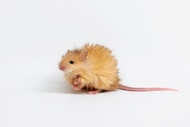Slow and steady wins the evolutionary race: Softshell turtles lived with dinos
If they lived with dinosaurs, were they really soft?

Let’s travel back in the mind’s eye, to the late Cretaceous. We’re a half a million years or so before an asteroid will impact at Chicxulub, killing off approximately 80% of all species around the world. The planet is still the empire of dinosaurs. Triceratops and Tyrannosaurus Rex are roaming the land. You can picture it; you’ve seen The Land Before Time. What you’re probably not picturing are comparatively modern animals. That’s because we tend to think of the Cretaceous almost like an alien planet with an ecosystem which is disconnected from the one we have today. That couldn’t be further from the truth.
Steven Jaskinski from the Department of Earth and Environmental Science at the University of Pennsylvania, along with colleagues, led a study examining a newly discovered softshell turtle which lived alongside dinosaurs near the end of the Cretaceous. Their findings were published in the journal Cretaceous Research.
“Dinosaurs are often the big-ticket items that people think about with paleontology,” Jaskinski told SYFY WIRE. “While it’s nice to know we have dinosaurs running around doing their thing, the smaller animals that get less fanfare are really important for understanding the environment as a whole. You don’t get much information if you look at the Serengeti and only look at elephants and lions.”
The newly classified species, dubbed Hutchemys walkerorum, was discovered at a dig site in North Dakota in 1975 and shelved without being seriously examined. That’s due, in part, to the fact that it was discovered alongside pieces of a triceratops skull which garnered more attention at the time.
While Jaskinski was working on his master’s degree, studying similar turtles, a co-author on the paper made him aware of this fossil. They pulled it off the shelf and gave it the attention it deserved.
“It’s from right at the end of the time of the dinosaurs, about 66.5 million years ago. Chances are this turtle was only around there at the very end of the Cretaceous. Once we get to the end, maybe half a million years after that, this turtle dies out,” Jaskinksi said.
Evolutionarily speaking, H. walkerorum had a short run, knocked off the playing field pretty quickly after emerging, and it’s unclear exactly what did them in. It’s possible that they vanished as a result of the same extinction event that killed the dinosaurs. It’s also possible that the changing environment at the boundary of the Cretaceous and the Paleogene caused them to change enough that they became something else. Whatever the reason, we don’t see them on the other side of the asteroid impact. Still, their turtle relatives remained successful, and are swimming the waters of our planet even today.
“In many ways, superficially, they would have looked very similar to modern softshell turtles. Their head would have been a little thinner and more elongated, and there would have been differences in parts of the shell. The stomach was a little thicker. But what we see via the soft tissues, if you were looking at it, would have looked a lot like what we see today,” Jaskinski said.
Perhaps the biggest difference was the size. Modern softshell turtles can be several feet in length, while this H. Walkerorum specimen was probably between 8 and 10 inches, despite being an adult. Scientists know it was an adult, even though they only have portions of the shell and no other individuals to compare it to, because of the way the bones have fused. Turtle shells have natural openings which close and fuse as they age. Because there are no gaps between bones, scientists know it was at least sexually mature.
There’s something almost magical about seeing an animal you can still encounter today, and knowing something very much the same witnessed the end of the dinosaurs.





























